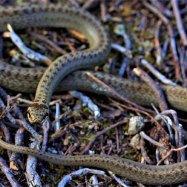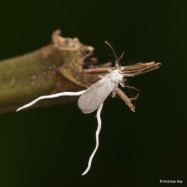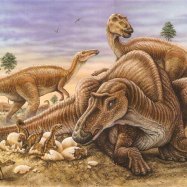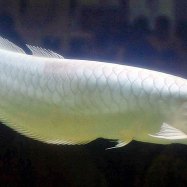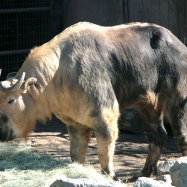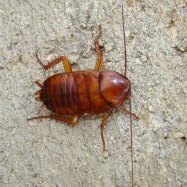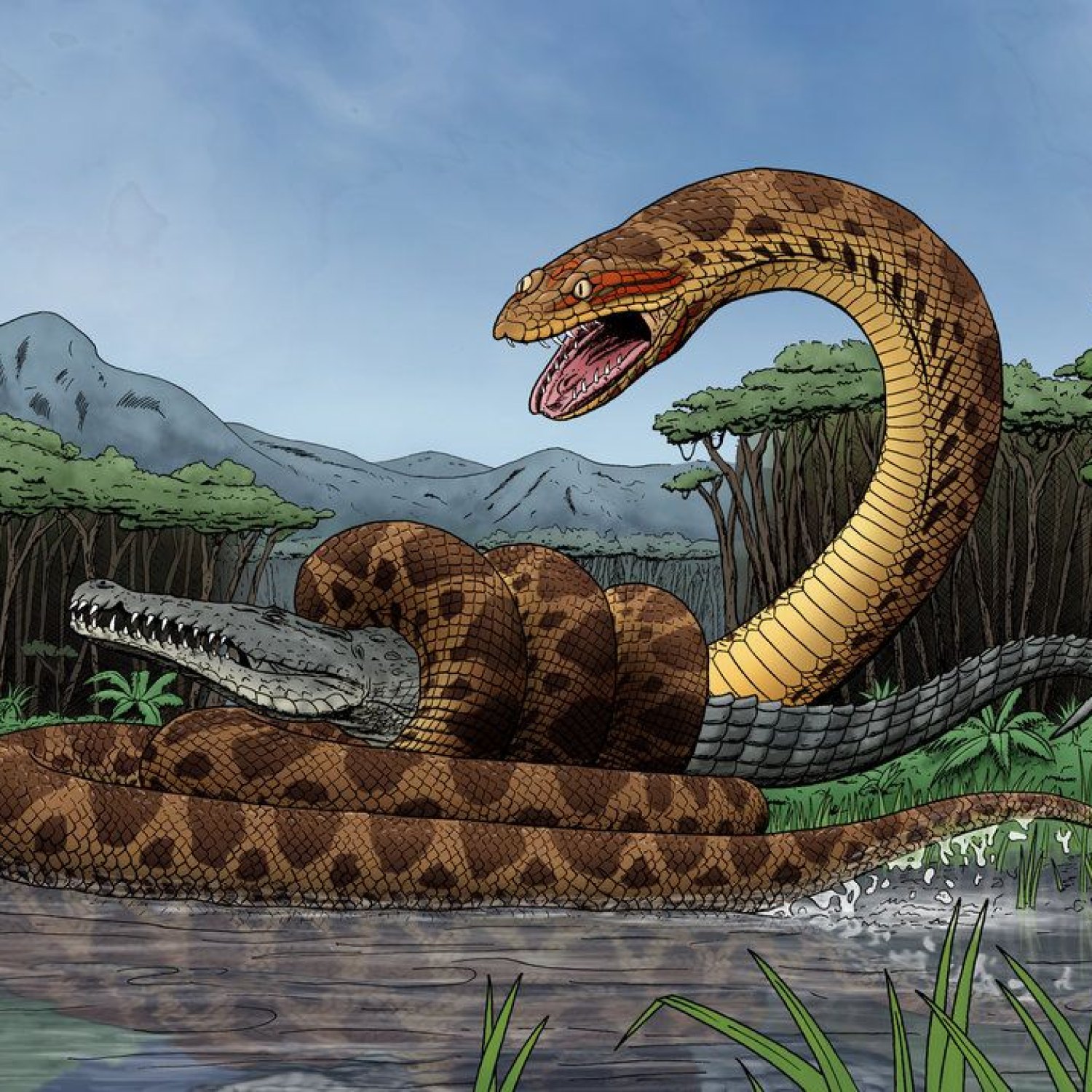
Titanoboa
Up to 40 feet
Titanoboa, the largest snake ever known to exist, stretched up to 40 feet in length. This prehistoric serpent roamed the lush forests of Cerrejón, Colombia, over 60 million years ago. Belonging to the Boidae family, its long and cylindrical body shape allowed it to move with ease and capture its prey. Today, its fossil remains serve as a reminder of the incredible diversity of animals that have lived on our planet.
Animal Details Summary:
Common Name: Titanoboa
Kingdom: Animalia
Habitat: Tropical rainforests and swamps
The Titanoboa: A Giant Serpent from the Depths of History
Imagine walking through a lush, tropical rainforest, the sound of birds chirping and the rustling of leaves filling the air. Suddenly, you come upon a massive snake slithering through the vegetation, its dark green scales glistening in the sunlight. But this is no ordinary snake - it is the Titanoboa, a creature that roamed the Earth more than 60 million years ago. Let us unravel the mystery of the Titanoboa and explore its fascinating features in depth Titanoboa.
A Titan in Name and Nature
The Titanoboa's scientific name is Titanoboa cerrejonensis, and its common name is simply Titanoboa. Both these names are derived from its colossal size and fearsome nature. The word "Titanoboa" comes from the Greek words "titanos," meaning giant, and "boa," referring to its serpent-like appearance. Its specific name, "cerrejonensis," is in honor of its discovery in the Cerrejón coal mine in Colombia.
Ancient Ancestry
To understand the Titanoboa, we must first delve into its family tree. It belongs to the family Boidae, which includes boas and pythons. These large, constricting snakes have been around for millions of years and have adapted to diverse habitats, including deserts, forests, and mountains. The Titanoboa's closest living relatives are the anaconda and the boa constrictor.
A Serpent from the Past
The Titanoboa lived during the Paleocene epoch, a period that lasted from about 66 to 56 million years ago Tasmanian Devil. This was just after the extinction of the dinosaurs, and the Earth was a very different place. It was warmer and wetter, with vast swamps and rainforests covering the land. This primeval environment was the perfect habitat for the Titanoboa to thrive.
Colombian Connection
The Titanoboa is native to Northern South America and was discovered in the coal mines of Cerrejón in northern Colombia. This makes Colombia the country of origin for this ancient serpent. The coal mines of Cerrejón were once a swampy wetland, and the remains of the Titanoboa were buried and fossilized under layers of sediment.
Anatomy and Adaptations
The Titanoboa's size is what makes it stand out from other snakes. It could reach lengths of up to 40 feet, making it the largest snake ever known to exist. Its body was also incredibly thick, with a diameter of around three feet. This body size was made possible due to a higher concentration of oxygen in the atmosphere during the Paleocene epoch. This allowed for more significant growth and the evolution of larger animals.
The Titanoboa's body shape was also different from most modern snakes. Instead of the typical triangular head and relatively short body, the Titanoboa had a long, cylindrical body with a slightly rounded head. This shape was ideal for both swimming in water and moving efficiently on land.
Hungry Hunter
The Titanoboa was a carnivore, which means it fed on other animals. Its diet would have consisted mainly of fish, reptiles, and small mammals. Its large body and powerful muscles allowed it to constrict its prey, suffocating them before swallowing them whole. Its teeth were also sharp and curved to hold onto prey, making it an efficient hunter.
Dwelling in the Depths
The Titanoboa was found in both tropical rainforests and swamps, but it spent most of its time in or near the water. It was a semi-aquatic creature, meaning it could live both on land and in water. Its powerful muscles were used for swimming, and its skin was slick, allowing it to glide through the water.
The Color of Nature
The Titanoboa was dark green, with lighter markings on its body. This coloration allowed it to blend in with its surroundings, making it difficult for other animals to spot. This was especially useful for hunting, as its prey would not see it coming until it was too late.
Impressive Intelligence
Despite its massive size, the Titanoboa was an incredibly intelligent creature. It was able to adapt to its environment, hunting in water and on land, and thriving in different types of ecosystems. This ability to quickly adjust to changes in its surroundings is a testament to its intelligence.
The Revival of a Prehistoric Predator
The discovery of the Titanoboa in 2009 caused quite a stir in the scientific community. The well-preserved fossils of this ancient creature allowed scientists to study its anatomy and learn more about its behavior and lifestyle. It was also a significant find for NLP, Natural Language Processing, as it provided a remarkable dataset for analysis and understanding.
A Tale of Survival
Despite its impressive size and intelligence, the Titanoboa did not survive the massive climate change that occurred towards the end of the Paleocene epoch. As the Earth cooled, the giant tropical forests that were once its home disappeared, along with its food sources. The Titanoboa's large size was no longer advantageous, and it could not compete with smaller, more adaptable animals. And so, the Titanoboa became extinct, leaving behind only fossils and a legacy of being one of the most incredible creatures to have ever existed on our planet.The Legend Lives On
The Titanoboa may be extinct, but its legacy continues to intrigue and amaze people to this day. Its tremendous size and unique adaptations have captured the imagination of many, making it a popular topic of research and discussion. And with the help of NLP, we now have a better understanding of this fascinating creature's story, making it an essential piece of our history that we continue to unravel.
Imagine walking through a lush, tropical rainforest, the sound of birds chirping and the rustling of leaves filling the air. Suddenly, you come upon a massive snake slithering through the vegetation, its dark green scales glistening in the sunlight. But this is no ordinary snake - it is the Titanoboa, a creature that roamed the Earth more than 60 million years ago. Let us unravel the mystery of the Titanoboa and explore its fascinating features in depth Titanoboa.
A Titan in Name and Nature
The Titanoboa's scientific name is Titanoboa cerrejonensis, and its common name is simply Titanoboa. Both these names are derived from its colossal size and fearsome nature. The word "Titanoboa" comes from the Greek words "titanos," meaning giant, and "boa," referring to its serpent-like appearance. Its specific name, "cerrejonensis," is in honor of its discovery in the Cerrejón coal mine in Colombia.Ancient Ancestry
To understand the Titanoboa, we must first delve into its family tree. It belongs to the family Boidae, which includes boas and pythons. These large, constricting snakes have been around for millions of years and have adapted to diverse habitats, including deserts, forests, and mountains. The Titanoboa's closest living relatives are the anaconda and the boa constrictor.A Serpent from the Past
The Titanoboa lived during the Paleocene epoch, a period that lasted from about 66 to 56 million years ago Tasmanian Devil. This was just after the extinction of the dinosaurs, and the Earth was a very different place. It was warmer and wetter, with vast swamps and rainforests covering the land. This primeval environment was the perfect habitat for the Titanoboa to thrive.Colombian Connection
The Titanoboa is native to Northern South America and was discovered in the coal mines of Cerrejón in northern Colombia. This makes Colombia the country of origin for this ancient serpent. The coal mines of Cerrejón were once a swampy wetland, and the remains of the Titanoboa were buried and fossilized under layers of sediment.Anatomy and Adaptations
The Titanoboa's size is what makes it stand out from other snakes. It could reach lengths of up to 40 feet, making it the largest snake ever known to exist. Its body was also incredibly thick, with a diameter of around three feet. This body size was made possible due to a higher concentration of oxygen in the atmosphere during the Paleocene epoch. This allowed for more significant growth and the evolution of larger animals.The Titanoboa's body shape was also different from most modern snakes. Instead of the typical triangular head and relatively short body, the Titanoboa had a long, cylindrical body with a slightly rounded head. This shape was ideal for both swimming in water and moving efficiently on land.
Hungry Hunter
The Titanoboa was a carnivore, which means it fed on other animals. Its diet would have consisted mainly of fish, reptiles, and small mammals. Its large body and powerful muscles allowed it to constrict its prey, suffocating them before swallowing them whole. Its teeth were also sharp and curved to hold onto prey, making it an efficient hunter.Dwelling in the Depths
The Titanoboa was found in both tropical rainforests and swamps, but it spent most of its time in or near the water. It was a semi-aquatic creature, meaning it could live both on land and in water. Its powerful muscles were used for swimming, and its skin was slick, allowing it to glide through the water.The Color of Nature
The Titanoboa was dark green, with lighter markings on its body. This coloration allowed it to blend in with its surroundings, making it difficult for other animals to spot. This was especially useful for hunting, as its prey would not see it coming until it was too late.Impressive Intelligence
Despite its massive size, the Titanoboa was an incredibly intelligent creature. It was able to adapt to its environment, hunting in water and on land, and thriving in different types of ecosystems. This ability to quickly adjust to changes in its surroundings is a testament to its intelligence.The Revival of a Prehistoric Predator
The discovery of the Titanoboa in 2009 caused quite a stir in the scientific community. The well-preserved fossils of this ancient creature allowed scientists to study its anatomy and learn more about its behavior and lifestyle. It was also a significant find for NLP, Natural Language Processing, as it provided a remarkable dataset for analysis and understanding.A Tale of Survival
Despite its impressive size and intelligence, the Titanoboa did not survive the massive climate change that occurred towards the end of the Paleocene epoch. As the Earth cooled, the giant tropical forests that were once its home disappeared, along with its food sources. The Titanoboa's large size was no longer advantageous, and it could not compete with smaller, more adaptable animals. And so, the Titanoboa became extinct, leaving behind only fossils and a legacy of being one of the most incredible creatures to have ever existed on our planet.The Legend Lives On
The Titanoboa may be extinct, but its legacy continues to intrigue and amaze people to this day. Its tremendous size and unique adaptations have captured the imagination of many, making it a popular topic of research and discussion. And with the help of NLP, we now have a better understanding of this fascinating creature's story, making it an essential piece of our history that we continue to unravel.

Titanoboa
Animal Details Titanoboa - Scientific Name: Titanoboa cerrejonensis
- Category: Animals T
- Scientific Name: Titanoboa cerrejonensis
- Common Name: Titanoboa
- Kingdom: Animalia
- Phylum: Chordata
- Class: Reptilia
- Order: Squamata
- Family: Boidae
- Habitat: Tropical rainforests and swamps
- Feeding Method: Carnivorous
- Geographical Distribution: Northern South America
- Country of Origin: Colombia
- Location: Cerrejón, northern Colombia
- Animal Coloration: Dark green with lighter markings
- Body Shape: Long and cylindrical
- Length: Up to 40 feet
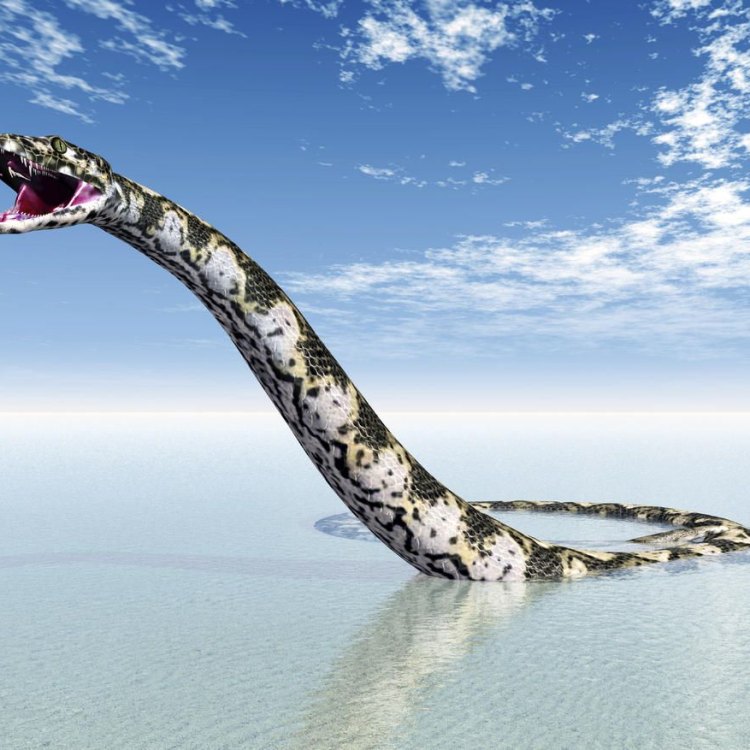
Titanoboa
- Adult Size: Giant
- Average Lifespan: Unknown
- Reproduction: Oviparous
- Reproductive Behavior: Mating is believed to have occurred during the rainy season
- Sound or Call: Unknown
- Migration Pattern: Non-migratory
- Social Groups: Solitary
- Behavior: Ambush predator
- Threats: Extinct
- Conservation Status: Extinct
- Impact on Ecosystem: Regulated populations of large prey animals
- Human Use: None
- Distinctive Features: Largest snake that ever lived
- Interesting Facts: Titanoboa was longer and heavier than the largest modern-day snakes
- Predator: None

Titanoboa cerrejonensis
The Rise and Fall of Titanoboa: The Giant Snake that Ruled the Jurassic
Imagine walking through the dense, humid forests of the Amazon during the late Jurassic period, about 60 million years ago. The trees tower above you, their leaves rustling in the gentle breeze. You hear the distant call of unknown creatures and the soft pitter-patter of raindrops. But there's something else, something that sends a shiver down your spine - a creature that reigned supreme over this ancient land PeaceOfAnimals.Com. A creature known as Titanoboa.Titanoboa, derived from the Greek words "Titanos" meaning giant and "boa" meaning snake, was the largest snake that ever lived, with an estimated length of 42-50 feet and a weight of over a ton. This prehistoric snake was first discovered by a team of scientists led by Carlos Jaramillo in 2009 in a coal mine in La Guajira, Colombia, and has since fascinated the world with its size and sheer power.
Let's take a closer look at this massive serpent, its behavior, and its impact on the ecosystem during its reign in the Jurassic.
The Giant Among Snakes
One of the most fascinating things about Titanoboa is its size. This ancient titan was significantly longer and heavier than any modern-day snake, including the well-known anaconda and reticulated python. But how does it compare to these snakes?The largest known anaconda was recorded at about 30 feet in length and weighed around 550 pounds, while the heaviest reticulated python weighed in at 350 pounds at 25 feet in length. In comparison, Titanoboa is estimated to have been 13-18 feet longer and over three times heavier than the heaviest recorded modern-day snake. It's safe to say that this colossal serpent would have easily surpassed these modern-day giants Treeing Walker Coonhound.
Ambush Predator Behavior
Despite its immense size, Titanoboa was surprisingly agile and possibly one of the most formidable predators of its time. As an ambush predator, it would wait patiently and camouflaged amongst the dense vegetation for its prey to come close enough before striking with incredible speed and force.Being non-venomous, Titanoboa relied primarily on its sheer size and strength to overpower its prey, which included large fish, crocodiles, and even giant turtles. Its massive constricting ability and sharp, backward-facing teeth made it a fearsome predator, and its victims would have little chance of escape once ensnared by its powerful coils.
Mysterious Parenting Behavior
One of the most interesting aspects of Titanoboa's life history is its reproductive behavior. As an oviparous species, Titanoboa laid eggs rather than giving birth to live young. However, the exact details of how it reproduced and raised its young remain a mystery.Scientists believe that mating occurred during the rainy season, but it's unclear if Titanoboa laid eggs in a nest and left them to hatch on their own or if it guarded and protected them until they hatched. It's also unknown how many eggs this massive snake would have laid at one time. Perhaps future discoveries of Titanoboa's egg fossils will shed more light on its mysterious parenting behavior.
A Lethal Predator, Extinct Threat
Unfortunately, Titanoboa's reign as the apex predator was short-lived. The exact reason for its extinction is still a topic of debate among scientists, but it's believed that the cooling climate and the decline of its primary food source, large crocodiles, contributed to its downfall.However, its presence as a top predator had a significant impact on the ecosystem. Titanoboa's sheer size and predatory behavior would have regulated the populations of large prey animals and kept the balance of the food chain in check. With its extinction, this delicate equilibrium was disrupted, and it's speculated that the decline of Titanoboa led to the flourishing of its prey, such as the giant turtles and crocodiles, resulting in a new dynamic within the ecosystem.
Extinct, Yet Significant
Despite its extinction, Titanoboa's impact is still felt in today's world. Its fossils have provided valuable insights into the ancient ecosystem and the climate of the Jurassic period. Scientists were also able to study the anatomy and genetics of this giant snake, leading to a greater understanding of snake evolution.Moreover, discovering the existence of such a massive creature has sparked public interest and curiosity, inspiring books, documentaries, and even a National Geographic Museum exhibition dedicated to Titanoboa.
A Reminder of Nature's Wonders
In our modern world, filled with advanced technology and towering skyscrapers, it's easy to forget the amazing creatures that have roamed the Earth long before our existence. The story of Titanoboa is a reminder of the wonders of nature and the incredible creatures that have lived and evolved on our planet.With every new discovery, we unveil a little more of our mysterious past and learn to appreciate the beauty and diversity of life on Earth. The next time you take a stroll through a dense forest, take a moment to imagine what it would have been like to cross paths with this giant among snakes, the Titanoboa.
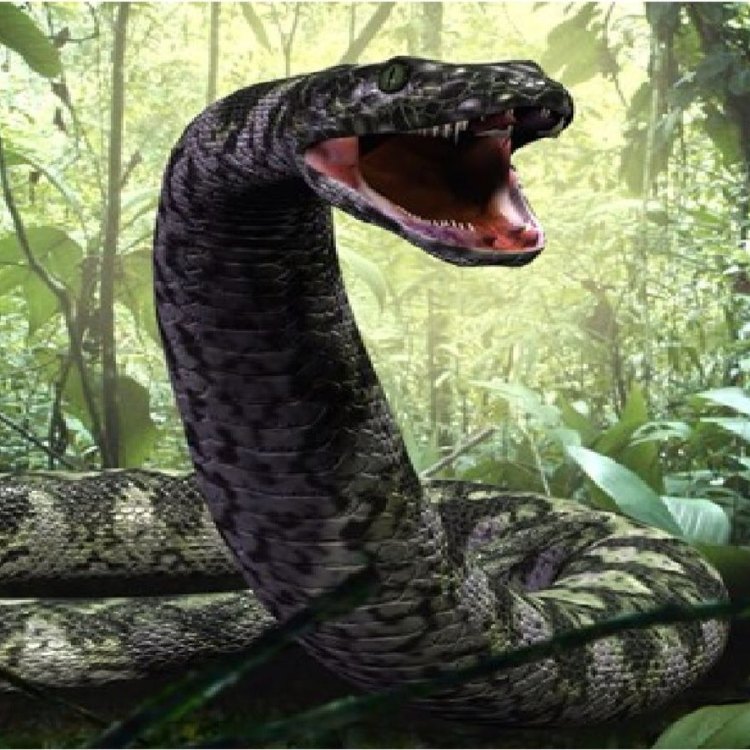
The Legend Lives On
Disclaimer: The content provided is for informational purposes only. We cannot guarantee the accuracy of the information on this page 100%. All information provided here may change without prior notice.



